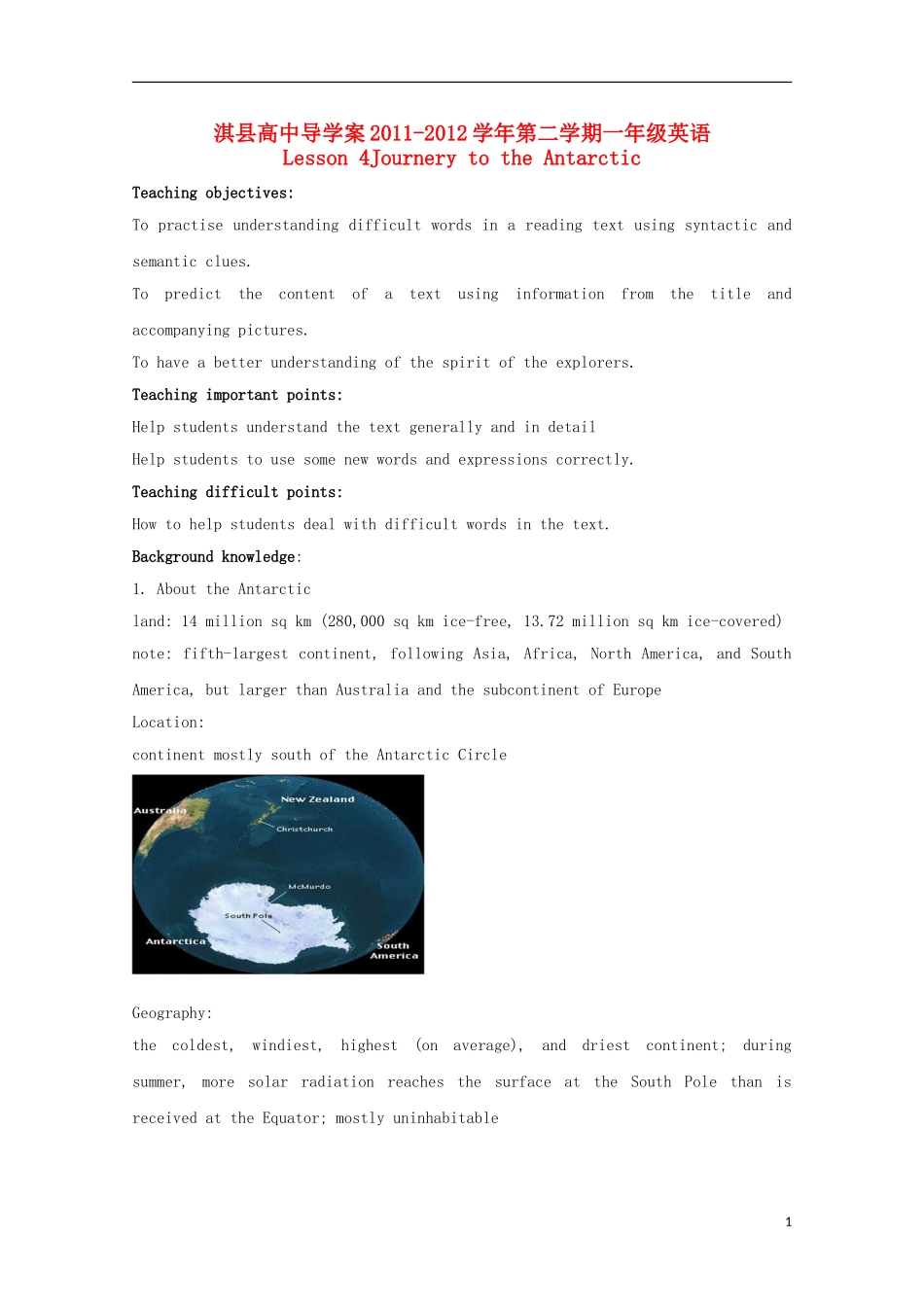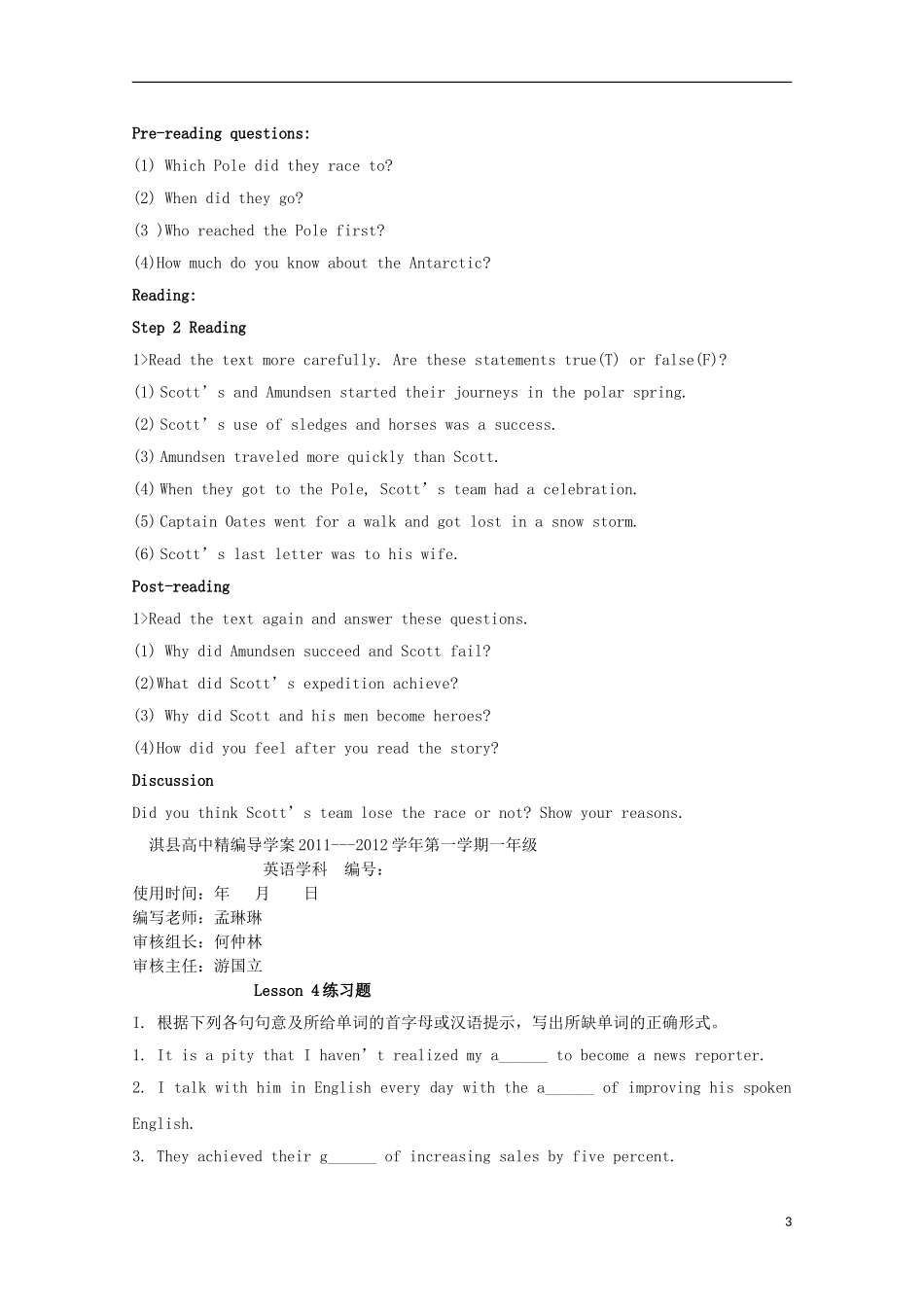淇县高中导学案 2011-2012 学年第二学期一年级英语Lesson 4Journery to the AntarcticTeaching objectives:To practise understanding difficult words in a reading text using syntactic and semantic clues.To predict the content of a text using information from the title and accompanying pictures.To have a better understanding of the spirit of the explorers.Teaching important points:Help students understand the text generally and in detailHelp students to use some new words and expressions correctly.Teaching difficult points:How to help students deal with difficult words in the text.Background knowledge:1. About the Antarcticland: 14 million sq km (280,000 sq km ice-free, 13.72 million sq km ice-covered) note: fifth-largest continent, following Asia, Africa, North America, and South America, but larger than Australia and the subcontinent of EuropeLocation: continent mostly south of the Antarctic CircleGeography:the coldest, windiest, highest (on average), and driest continent; during summer, more solar radiation reaches the surface at the South Pole than is received at the Equator; mostly uninhabitable12. The Race to the Pole Roald Amundsen, born in 1872 near Oslo, Norway, left his mark as one of the most successful polar explorers ever born. On December 14th 1911, he stood victoriously at the South Pole. He reached a goal that was the dream of many men. For the first time, human voices broke the awesome silence of the world's southernmost point.Robert Falcon Scott was born at Outlands on June 6, 1868. He had a race with Roald Amunsden to the South Pole, and he and his four companions arrived one month later than Roald. But unfortunately, on their way back, all of them died of hunger and extremely cold.2Pre-reading ques...


